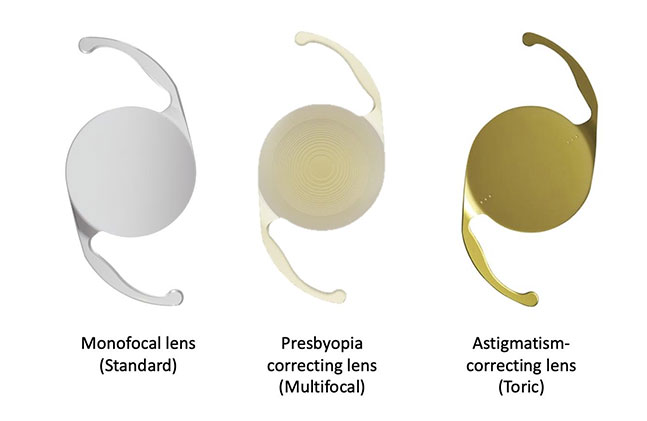Intraocular Lens (IOL)
Interpreting Cataract Surgery and Intraocular LENS options
An intraocular lens (IOL) is used to replace the human lens during cataract surgery. This lens is typically made of acrylic, but it can also be silicone or polymethylmethacrylate (PMMA). It is usually implanted behind the iris, the colored portion of the eye, and cannot be seen. This is the natural position of the human intraocular lens.

There are three basic types of IOLs: monofocal, multifocal, or accommodating. Each is designed for a specific corrective function. An astigmatism-correcting (toric) lens can be applied to any of these types.
Monofocal
A monofocal IOL is the most common type of intraocular lens used. It provides vision at a fixed distance. This is typically calculated for far vision but can be targeted for near. Most patients will opt for far vision and wear reading glasses for near work. Patients can choose the option of blended vision in which one eye is targeted for distance and the other eye is targeted for intermediate vision. Additionally, this lens can be used for monovision, in which one eye is targeted for distance and the other eye is targeted for near vision.
Multifocal
Multifocal intraocular lenses are specially designed to provide vision at multiple distances (far, intermediate and near) and can decrease a persons’ dependence on glasses. Some patients will still require part-time spectacles.
Accommodating
Accommodating intraocular lenses have flexibility in their focus. This lens is typically set for distance and will provide some limited intermediate or reading vision. These are designed to decrease spectacle dependence
Toric
The Toric intraocular lens is specifically designed to correct astigmatism (the irregular shape of the cornea). These are typically used to achieve best distance vision and will decrease dependence on spectacles. They can also be used for blended vision or monovision
